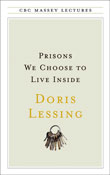The Not-So-Great Debate
With every year, particularly since 9/11, it’s harder and harder to find reasoned debate. By ‘reasoned debate’, I mean a discussion where arguments are backed up with reason, a bit of logic, and some semblance of research/understanding of history. What doesn’t pass for ‘reasoned debate’ – what we currently have before us – is hyperbole, name-calling, grand-standing, and ridiculously partisan follies paraded in all forms of media.
Before I go any further, I encourage you to look at the dictionary definition of debate. The important word repeated throughout is discussion. I don’t think this word needs defining, though some days I think it should be printed on t-shirts and handed out to school children so that it’s not forgotten. But I digress.
Two reasons for the lack of true (as in useful) debate come to mind, although I’m sure there are more:
1) The replacement of individual thought with self-invested group-think.
2) The perversion of language and its subsequent use as a weapon.
– – –
The first point is as clear as it is demonstrable. Increasingly, individual citizen input (from either the public or private sector) is bypassed in favour of specialists from advocacy groups and so-called think-tanks. Some examples: in Canada, The Fraser Institute, the C.D. Howe Institute, and the Canadian Taxpayer Federation. In the U.S., examples include the CATO Institute, the Heritage Foundation, and the Alexis de Tocqueville Institution.
Whether leaning towards a particular side of the political spectrum or specialising in a particular av enue of advocacy, all of these groups have one thing in common: self-interest. In corporatist style, think tanks and advocacy groups have been propped up as representatives for a discussion which should take place within the public arena but doesn’t. It doesn’t because the public arena is seen as messy; in an increasingly corporatist society, messy doesn’t compute. Messy needs to be streamlined. The rise of advocacy groups, think-tanks and (increasingly) NGO’s often has nothing to do with the public and everything to do with establishing each group’s predominance in their field. Indeed, the first and last thing both the Canadian Taxpayer Federation and the CATO Institute have in common is making sure their organisations keep running – certainly not fostering independent thought.
enue of advocacy, all of these groups have one thing in common: self-interest. In corporatist style, think tanks and advocacy groups have been propped up as representatives for a discussion which should take place within the public arena but doesn’t. It doesn’t because the public arena is seen as messy; in an increasingly corporatist society, messy doesn’t compute. Messy needs to be streamlined. The rise of advocacy groups, think-tanks and (increasingly) NGO’s often has nothing to do with the public and everything to do with establishing each group’s predominance in their field. Indeed, the first and last thing both the Canadian Taxpayer Federation and the CATO Institute have in common is making sure their organisations keep running – certainly not fostering independent thought.
One thing you can count on is that advocacy groups and think-tanks are consistent: everyone tows the line, everyone knows the script. Their facts, usually half-sided, are provided-for internally and what research they do is with the sole intent of reaching a pre-conceived conclusion that suits a pre-defined format, whether it be economic, social, or political.
tows the line, everyone knows the script. Their facts, usually half-sided, are provided-for internally and what research they do is with the sole intent of reaching a pre-conceived conclusion that suits a pre-defined format, whether it be economic, social, or political.
When these organisations are inserted in place of the citizen’s voice, democracy becomes Kafka-esque. Often, one ideological think-tank is pitted against another, and what is discussed has no relation to truth (as either the citizen sees it or would like questioned) but to the safe consistency of “staying on-message”. Thus, there is very little debating in lieu of ideological advertisement.
It’s tempting to admire projects like Media Matters for America, which can be very effective at spotting media bias, but my frustration is that its interests are inherently one-sided: attack Republican bias, but support/protect Democrat initiatives. Indeed, it would be daunting for an organization devoted to highlighting media bias if it was looking at all sides of the media paradigm – and this comes to my concluding point: vested interests are easy to finance. Complexity is not.
– – –
The second blockade to real debate is the perversion of language. Media pundit Bill O’Reilly is probably one of the most accomplished when it comes to the distortion of language. His polemic style, his bullying aggression towards dissenting opinion, and his partisan hatred are broadcast every weekday to an audience of millions. He begins and ends most of his addresses with the well-worn cloak of false common-sense: everyone wants to protect freedom, everyone is concerned about terrorism, everyone knows that there are far-left extremists among us. Everyone. His consistent target is a group known previously as liberals, but most recently goes by the moniker secular progressives. In O’Rielly’s words, they are elitists and only Bill O’Reilly can identify this imminent threat to our safety. Obviously this is all very partisan and prejudicial and not dissimilar to what has been said and demonstrated throughout the 20th century by both fascists and Communists – but everything about O’Reilly and FoxNews is paradoxically draped in the opposite: his show is called The No-Spin Zone and his channel’s mantra is Fair and Balanced. The paradox continues the more attention is spent on their language: leftists are compared to Nazis…actually, that’s wrong: everyone who takes a different side ends up being portrayed as a Nazi…or alternately a Communist. (I suggest FoxNews create a doll that, on cue, devotees could raise and shake towards the TV screen at opportune times, whilst shouting “Ooogey boogey ooogey!”.)
A less outraged sentiment is echoed by newspaper columnists such as the Globe and Mail’s Margaret Wente, who habitually tut-tuts those who question authority (save for when she decides to). Her approach, albeit certainly less vitriolic than O’Reilly’s, is to portray dissenters as part of a privileged latté-sipping middle-class elite. Her motto seems to be: shut up and live with it – ostensibly the antithesis of debate itself.
Again, we come back to the word elitist. Elitism is, we are told, our enemy. It’s an easy way to cast aspersions on dissent – let’s face it, there are always going to be a smaller percentage of people who ask disinterested questions (that is, questions that are not self-serving but serve the ideals of the community). In her book, Prisons We Choose To Live Inside (reviewed here), Doris Lessing is philosophical about the word elitism and it’s accusatory usage. She goes so far as to determine it a necessary evil if it means the freedom to ask important, if unpopular, questions aloud. In other words, if painted an elitist – so be it.
– – –
From a local perspective, the debate disconnect was driven home – literally and figuratively – when in 2000, Toronto broadcaster CityTV refused to hold an election debate between the incumbent mayor, Mel Lastman and his opponents. This was the first time CityTV had decided to do this since they began hosting televised mayoral debates*. While it was arguable at the time as to the feasiblity of any of Lastman’s opponents winning (and it should be noted that Lastman won with 80% support), it was shocking to see a local broadcaster that wraps itself in a mantra of street-level community-building refuse to even go that simple distance. I remember watching an evening call-in show on CityTV, hosted by Lorne Honickman, whose guest was mayoral hopeful Tooker Gomberg – this took place after the announcement that there would be no debate. I clearly remember the disbelief, bordering on contempt, that Honickman displayed as caller after caller phoned-in to simply ask: why? Why no debate? His retisence to discuss the subject was as obvious as his clear disdain for his guest.
– – –
Debate is inclusive, not exclusive. Its aim is perspective – not the promotion of canned answers or unmovable positions. The object of debate is not disgracing dissent, but putting forth reasoned arguments. I think there’s a long road ahead as regards our ability to communicate, to argue respectfully, and to share ideas. These things happen at a smaller scale all the time in our communities, but I think we’ve forgotten how important they are, thus it’s going to take a while for citizens to feel attached to it again; to take command of their own voice, as it were.
The responsibility to restore true debate falls on civilians – when the citizenry abdicates responsibility for public discussion, we shouldn’t be surprised when the gap is filled by self-interested interest-groups. When societies forget about their social responsibilities those responsibilities are often annexed as anachronisms, and replaced by the empty comfort of technology (ie televised think tanks). The Internet is a good tool for the restoration of debate, but it’s only a tool and not in and of itself anything more. What’s needed is the will to reform, reason, and a sense of responsibility to society as a whole.
* (I can find no record to refute this, but I’m open to correction)
Darfur: Rally to Raise Awareness
Tomorrow (Sunday April 30th) there will be a series of rallies happening around North America to raise awareness of the terrible situation in Darfur, Sudan.
You can find out where in your vicinity this rally is happening here.
It is important that our political leaders, who have all cut back support to this region recently, understand the gravity of the situation: routine killings, rapes, and ethnic cleansing.
Is this the only place in the world (or Africa for that matter) that needs attention – no. It’s easy to say “What about Somalia?” or “What about this other country?”. The thing is, in the absence of a perfect solution to those questions I would rather err on the side of helping than sitting at my desk trying to address an impossibly large problem that satisfies all criteria.
If you live in Toronto, the rally starts tomorrow @ 1pm at Queen’s Park. Info located here.
If you are interested in getting involved, please do.
(for context on this problem, please see this entry in Wikipedia)
Comment: On Perfection
per·fec·tion·ism n.
- A propensity for being displeased with anything that is not perfect or does not meet extremely high standards.
Never trust a self-professed perfectionist. There are two reasons for this:
1) People who identify themselves as perfectionists usually aren’t perfectionists, but insecure people with naive aspirations of greatness.
2) True perfectionism is a mental illness, not a quality worth admitting to.
Essentially, perfectionism is a neurosis which, contrary to common understanding of the term, imposes set boundaries on accomplishment. This may seem at odds with our popular understanding of it. Perfectionism, as commonly seen, is an aim towards a standard of accomplishment which is exceptionally high. It is for this badge of honour that the insecure wrap themselves in this garment. I would argue however that the perfectionist mindset is so captained by the end result (“perfection”) that the person under this condition is actually unable to see other possibilities.
Perfectionism is thus the inability to see beyond a single result. To the afflicted, this single result is everything, but in actuality it is a foolish construct; it denies the natural or realistic ebb and flow of performance and quality.There are always going to be greater and lesser works in a person’s output.
A profound example was illustrated in “Art & Fear: Observations on the Perils (and Rewards) of Artmaking“, by David Bayles and Ted Orland (ISBN: 0961454733). A pottery teacher splits his class into two groups; one group is to focus on making one exceptional, perfect object for the end of the course. The other group is to focus on creating a series of objects. At the end of the course, the latter class ended up with the more impressive end result. Why? Because their output was steady; even though their first examples were weak (as would be expected), with each successive piece of pottery there was steady improvement to the extent where they often surpassed those classmates in the other group whose itinerary it was to create “perfection”.
When someone says something is perfect (in all seriousness), they deny the flexibility and infinite variables that surround us. The fact is, nothing is perfect – if it were, there wouldn’t be much point in carrying on, would there?
RIP: Jane Jacobs
“The point of cities is multiplicity of choice.”
– Jane Jacobs, 1916-2006
From CBC News:
Toronto-based urban critic and author Jane Jacobs died Tuesday morning.
- RELATED: Remembering Jane Jacobs
 |
|
Jane Jacobs, shown in 2004, influenced a generation of urban planners with her critiques about North American urban renewal policies. (Adrian Wyld/CP)
|
Jacobs, author of The Death and Life of Great American Cities, and most recently, Dark Age Ahead, was 89.
Her powerful critiques about the urban renewal policies of North American cities have influenced thinking about urban planning for a generation.
Born May 4, 1916, in Scranton, Penn., Jacobs had made her home in Canada since the late 1960s.
Educated at Columbia University, she met her husband, architect Robert Jacobs, at the Office of War Information in New York, where she began writing during the war.
Known for protesting sprawl
The strong themes of her writing and activism included opposition to expressways, including the Spadina Expressway in Toronto, and the support of neighbourhoods. Jacobs has been arrested twice while protesting urban plans she believed to be destructive.
She also explored these ideas in books such as The Economy of Cities, Cities and the Wealth of Nations and Systems of Survival: A Dialogue on the Moral Foundations of Commerce and Politics.
The Death and Life of Great American Cities, published in 1961, questioned the sprawling suburbs that characterized urban planning, saying they were killing inner cities and discouraging the economic vitality that springs organically from neighbourhoods.
Inspired ‘Ideas That Matter’ gathering
Jacobs settled in Toronto in 1969. There she supported developments such as the St. Lawrence neighbourhood, an inner-city development for people of all income levels.
In 1997, the City of Toronto sponsored a conference entitled Jane Jacobs: Ideas That Matter, which led to a book of the same name.
Her most recent book, Dark Age Ahead is “a grave warning to a society losing its memory,” jurists said in awarding her the $15,000 Shaughnessy Cohen Prize for Political Writing in 2005.
“In spare, exquisite prose, Jane Jacobs alerts us to the dangers facing the family, higher education, science and technology, the professions, and fiscal accountability. Drawing on history, geography, and anthropology, this book reflects a lifetime of study and observation, offering us lessons to avoid decline,” the jury said.
Dark Age Ahead finds comparisons between our current North American culture and European culture before the fall of the Roman Empire and the subsequent Dark Ages.
Interviewed by Canadian Press when she won the Shaughnessy Cohen Prize, Jacobs said, “People really know themselves that the dark age is ahead. They’re worried, and they haven’t articulated it, but they feel it.”
“I think it’s late but we don’t need to go down the drain,” she said. “But we will if we aren’t aware. It’s a cautionary book.”
Photo: #8 (Manning)
Book Review: Prisons We Choose To Live Inside, by Doris Lessing
House of Anansi Press has re-released their excellent CBC Massey Lectures Series. These are expansive, thought-provoking works which aim to push our understanding of society and the individual in the late-20th (now early-21st) century. The series includes works from many different points of view: A Short History of Progress by Richard Wright, The Unconscious Civilization by John Ralston Saul, and Beyond Fate by Margaret Visser are only a fragment of this extremely revealing and influential volume.
Prisons We Choose To Live Inside, a collection of five lectures author/novelist Doris Lessing gave in Canada in 1986, is a fine introduction to this astutely-observed collection. Clocking in at a mere 76 pages, Lessing lays down a sobering, eye-opening conception of the place of the individual in modern-day society. Her points are clear: history (the study of which she advocates with Cassandra-like insistence) clearly warns us against the perils of becoming embroiled in “mass emotion” and the inherent fascism of group-think. Repeatedly, she advocates the need for cool, objective distance from events and society – even at the peril of seeming an elitist.
With succinct skill and a preference to reference personal experience over statistics, she lays down her points consistently throughout:
I think when people look back at our time, they will be amazed at one thing more than any other. It is this – that we do know more about ourselves now than people did in the past. But that very little of it has been put into effect.
She makes it clear that there is little excuse, living in an age where social sciences (psychology, sociology, social behaviourism) have flourished, for society to not be equipped with an understanding of the basic underpinnings of society and human behaviour. Yet we don’t; the information never trickles down from academia in a way that can be instilled easily in our public schools, perhaps because the message is largely: group-thinking and mass emotions are our undoing – at risk of ostracism, it’s best that you question everything.
One of the many examples she lists is how Stalin, at the time when the Nazis invaded the Soviet Union, was referred to in Allied propaganda as ‘Uncle Joe’ and how the Russians’ defiant struggle was our struggle…only to turn on a dime after the fall of Hitler and turn against ‘Uncle Joe’, decrying every aspect of the Soviet Union not only as backward – but evil. This last word is very important within the context of Lessing’s lectures because historically it tends to come up every time a group wishes to strengthen their moral stance – and eliminate dissent. It isn’t enough to politely disagree – you must denigrate and vilify. Lessing speculates the reason behind this lies with our animal instincts: the instinct to separate into good/bad, black/white etc..
One of her more chilling statements, which she uses when talking about her childhood in war-torn Southern Rhodesia (now Zimbabwe), is that we have to accept that there are people in all parts of the world – in every society – who quite simply enjoy barbarism. They enjoy it, and, when society is on the verge of a conflict, these same people will move to the forefront to push things towards violence.
Again, sobering – and pertinent – stuff. Lessing’s tone is unapologetic, yet she does pepper her lectures with humour (albeit darkly at times). One thing to be aware of is that the original lecture was given in 1986; her examples refer to the British mining strike of ’84, the Falklands War, and then-Communist Russia. Obviously, for those not born early enough to remember these conflicts, it may be good to have Wikipedia nearby for a little context. However, her analogies and references are universal and certainly applicable to the debacles we face today. Her speculations are haunting in their honesty and relevance, and I am reminded of someone’s reference to John Ralston Saul’s Voltaire’s Bastards as “a hand grenade disguised as a book”.
Quite true, and we are all the better for reading books such as these.
Prisons We Choose To Live Inside is available for sale at a fine independent bookstore near you, as well as…Powell’s, Amazon, Chapters.
Published by House of Anansi Press (ISBN: 0-88784-5215)
Context: Reality-TV
 I was reading Theresa C’s comment, and felt inspired by her saying how “Un-Reality TV is mind numbing”. I largely agree, and thought that people should know where this medium came from.
I was reading Theresa C’s comment, and felt inspired by her saying how “Un-Reality TV is mind numbing”. I largely agree, and thought that people should know where this medium came from.
Let’s start with some history, because reality-TV, currently trickling down from the peak of its popularity, neither came about accidentally nor without reason.
In 1988, two of the largest television-industry unions went on strike: SAG (Screen Actors Guild of America) and the WGA (Writer’s Guild of America). With a long and protracted labour action underway, television producers (whose job it is to raise money, oversee production, and sell their shows to networks) were left potentially without any means to do their job: produce. They were seemingly hog-tied by the fact that they couldn’t hire actors or writers.
There were three means that evolved by which producers (and networks) could work around this: the newsmagazine program, the daytime talk-show, and the so-called “reality show”. The former was a variation based on existing (and relatively successful) programs such as “60 Minutes“, only with a stronger emphasis on real-time/ENG-style aesthetics (which evolved from the increasing portability of video cameras and the emergence of the one-man newsgatherer technique pioneered by such TV stations as City-TV in Toronto). Utilizing a stronger visual style rather than talking-head interviews, with an emphasis on flow rather than a strict focus on content, both CBS and ABC rolled-out “48 Hours” and “PrimeTime Live” respectively. Eventually, this verite style merged into existing and new 60 Minutes-Lite programs such as “A Current Affair” and “Inside Edition“.
The second way producers diverted the use of actors and writers was creating more daytime talk-shows which, unlike the comparatively tame examples set by Oprah Winfrey and Phil Donahue, focused on live conflict and on-stage humiliation. Shows like “The Maury Povich Show” and “The Jerry Springer Show” lead the ground in a confrontational and largely exploitational style, utilising supposedly real everyday people as their guests. Of course, real everyday people aren’t consistently exciting, so often the focus was on Neo-Nazis, domestic family conflicts, and, well, idiots.
The last format was the “reality tv show”. The difference between this and the newsmagazine/talk-show formats was utilising a day-in-the-life-of style, where the camera (usually just one) was always on, following its subject, hoping to capture excitement. The progenitor of this was “COPS“, which aired on the FOX network in 1989. COPS, ostensibly a means for producers to side-step using actors and writers, turned into a phenomena from which much of the current streams of reality-TV can be drawn from: intense, outrageous, cheap to produce.
(Note: almost every show mentioned above – with the exception of “A Current Affair”, a show which soon devolved into the same scare tactics and exploitation of its brethren – started as a direct result of the SAG and WGA strikes, circa 1988.)
In other words, aesthetics aside, what started as a way for producers to produce during the labour-action ended up as a cost-efficient way to create cheap programming which the public took to very quickly and the networks gobbled-up: it was engaging, often enraging, and allowed the audience to peer into the seamy side of society from a safe (if voyeuristic) distance.
It was only until recently – ten years after the SAG and WGA strikes – when any modicum of creativity was injected into the medium, when programs such as “Survivor“, “Blind Date“, and “The Apprentice” took the elements of all three of the above mediums and went primetime against ensemble dramas and sitcoms to astounding success.
Of course, every fad must die, and slowly this newest generation of the reality-TV mould is fading away into obscurity, reminiscent of the last days of Jerry Springer when even the most outrageous bullshit didn’t get the ratings it used to. Too many shows, too little fresh ideas, the medium has devolved into self-parody with the likes of “The Simple Life” and “American Idol“.
Reinvigorated by the success of harder-hitting dramas on HBO (like “Six Feet Under“) the public is coming back around to ensemble drama and network television has responded with a better-than-average crop of programs in response. So what will the next metamorphosis for reality-TV be? Possibly a return to live performance on television, in the style of the great Sid Caesar and Jackie Gleason. Ironically, what television started out with in its infancy – an extension of vaudeville and theatre – may come back some 50 or so years later to reclaim our attention. That I would look forward to seeing.
Photo: #1
Article: Telefilm in the Hotseat
In the latest Maclean’s magazine, Brian D. Johnson writes a perfect summation of what is wrong with English Canadian filmmaking: not one thing, but several – and most paths lead back to the government-backed, taxdollar-fuelled funding agency, Telefilm. The article in question isn’t available online, so I suggest you purchase your copy at the local store.
Titled “The Lost Picture Show”, Johnson articulates exactly the frustration amongst established and independent filmmakers who’s goal is to shoot commercially accessible films; this stands in contrast to the long line of edgy/anti-hero ridden/low-key releases which have largely gone straight to video with little mainstream acclaim and fewer people who could vouch to have seen them.
As Johnson notes in his interview with Paul (Due South, Men With Brooms) Gross:
‘English Canadian cinema is wedded to an auteur model based on the early festival breakthroughs of some “really terrific filmmakers like Atom Egoyan.” Then [Gross] adds, “It’s been stuck in that mode for a while. Festivals are composed of audiences that you never see replicated in a normal theatre. We’ve hidden behind this intellectual rampart. And we end up in this perverse situation where we assign to any failed film a great deal of intellectual integrity.”‘
As much as I love/support/appreciate the dark, edgy and ultimately hard-to-market work of filmmakers such as Guy Maddin, I admit that it cannot be our only cultural sustenance. We cannot survive soley on a meal of dark introspection (though it makes for such a wonderful – somtimes necessary – dish from time to time).
The thrust of much of the article is the war between producers, distributors (roundly accused by many of taking the money and running), and the English-language arm of Telefilm – whose opaque methods and logic would astound even The Knights of Templar.
As would be predicted, the producers want distributors to take more risk (to discourage the habit of flipping their investment by selling broadcast rights to films and then spending a fraction of their profit on a weak/token theatrical release that no one will see), the distributors want everyone to take more risk, and Telefilm, recently headed by semi-autonomous robot Wayne Clarkson, can only field the disgruntlement by reacting not like the head of a company (as we would expect) but like your typical corporate lackey:
“Is there any issue? Absolutely. Is the present system working? Not to the degree that we all wish it would. Do there have to be changes? Absolutely.”
Great stuff, Wayne.
Some modest suggestions of my own:
1) Non-Quebec film exhibitors must be obligated to devote 10-15% of screen time to Canadian-made features (English and/or French-language). If Can-Con (Canadian content regulations) can apply to radio and television, it makes perfect sense that theatres should shoulder this as well.
2) Telefilm should drop the “envelope system” (whereby a successful film’s producer is granted a no-strings $3.5 million each year for three years to invest as he/she wishes). It only leads to the anemic creative impasse we’ve been stuck with for the past 10 years: the same people support the same people and there is no incentive towards quality or success.








